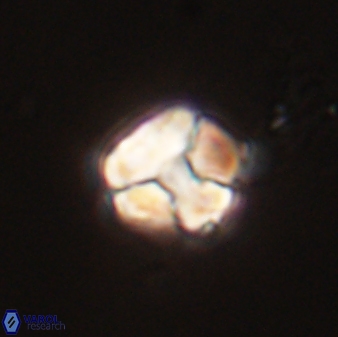Karoulimorfi asynithis
Set number: 48
-
1
-
2
-
3
-
4
-
5
-
6
-
7
-
8
-
9
-
10
-
11
-
12
-
13
-
14
-
15
-
16
-
17
-
18
-
19
-
20
10µm
in mobile mount
Karoulimorfi asynithis Varol, in prep.
Octolithus - Agnini et al., 2007, pl.1, fig.1
Octolithus-Sphenolithus integrate - Agnini et al., 2007, pl. 1, figs. 2-3.
Circular species of Karoulimorfi have a reel like core with unequal ends surrounded by several segments.
From Greek asynithis, unusual – referring to its unique shape.
The coarse segments surround the distinctly narrower end of the reel, whereas the finely striated rim surrounds the wider end of the reel.
Karoulimorfi asynithis is distinguished from Semihololithus by being circular in plan view, whereas the latter is elliptical in plan view. The central core is reel like with unequal ends in Karoulimorfi asynithis, but the central body has segmented only at the one end.
This unusual species is an excellent marker
Agnini, C., Fornaciari, E., Raffi, I., Rio, D., Röhl, U. & Westerhold, T., (2007): High-resolution nannofossil biochronology of middle Paleocene to early Eocene at ODP Site 1262: implications for calcareous nannoplankton evolution. - Marine Micropaleontology, 64: 215-248.
